My Haikubox told me within the last week that Indigo Buntings had arrived back to the Northland (see my review of Haikubox and bird migration). For me this means I have to take my annual trip to Hawk Ridge just after sunrise. I wait for a sunny day with light winds. It was 45F when I left for Hawk Ridge (only 4 miles from my home via 7 Bridges Road). Light winds are necessary to insure I don’t freeze up there since I am always wearing shorts! Light winds also means better birding.
By 5:30 am (sunrise is at 5:15 am) I was walking down the wooden stairs from Skyline Parkway to the ledge. I waited for the singing to begin, and It only took a few minutes before I heard multiple male Indigo Buntings singing out to show their territories.
Indigo Sunrise – the view back towards the harbor. The large white building is Northland Country Club where I caddied for many years. Imagine carrying two large, heavy golf bags up the rather steep Duluth hill. My biggest fear was getting assigned two golfers who would end up duffing balls to opposites sides of the fairway / rough (remember the hill). Back in the early 1970’s one was paid $5 for 18 holes of caddying (6+ hours of work). Normally a caddy could also expect a $1 tip and a can of pop after nine holes. It was not easy work. Monday’s caddies were allowed to golf free at Northland Country Club, but one had to tee off by 8:00 am. I don’t believe I ever saw a member play early on a Monday morning! 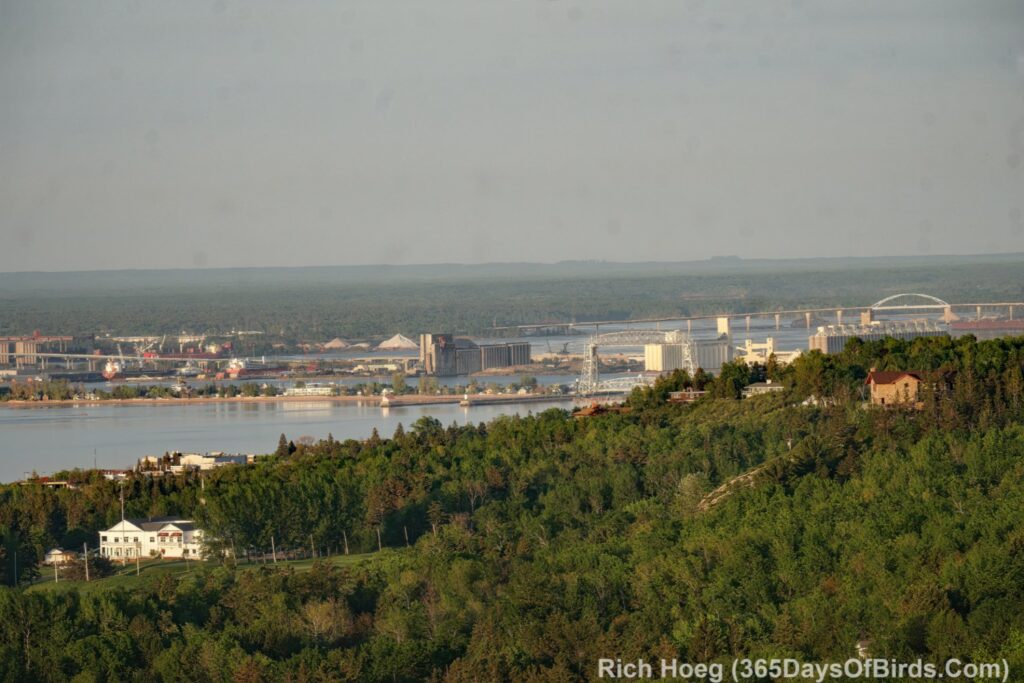
Discover more from 365 Days of Birds
Subscribe to get the latest posts sent to your email.
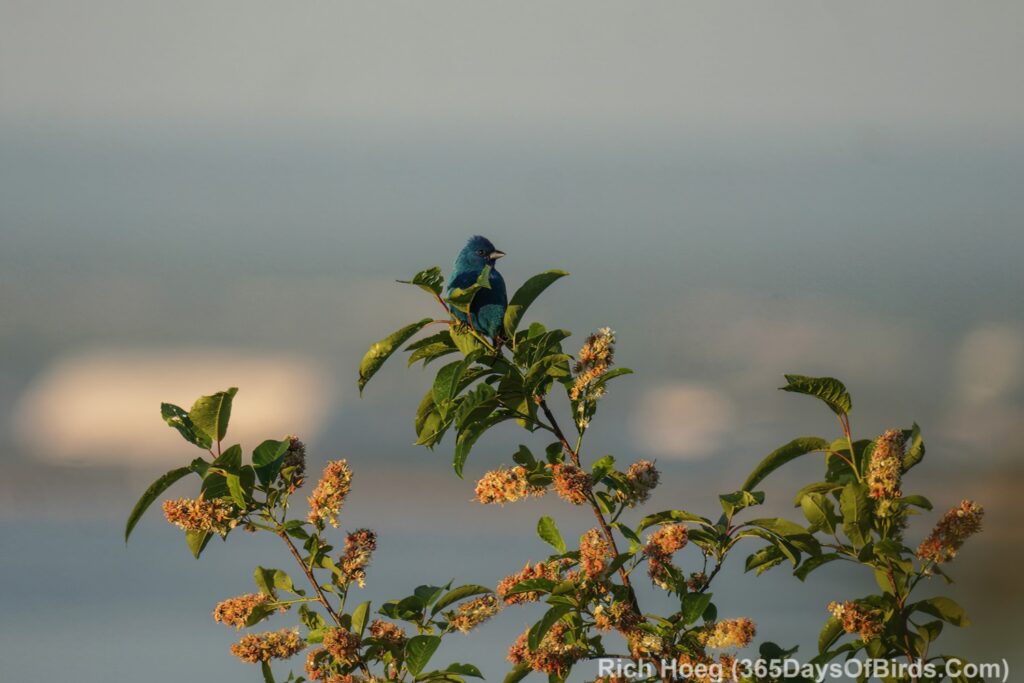
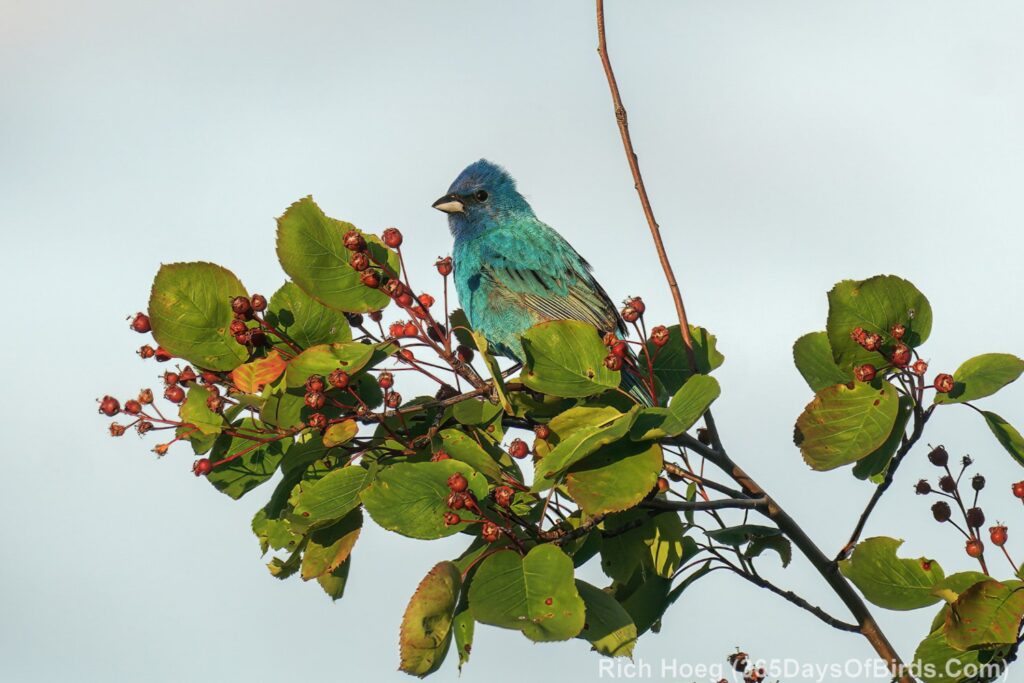
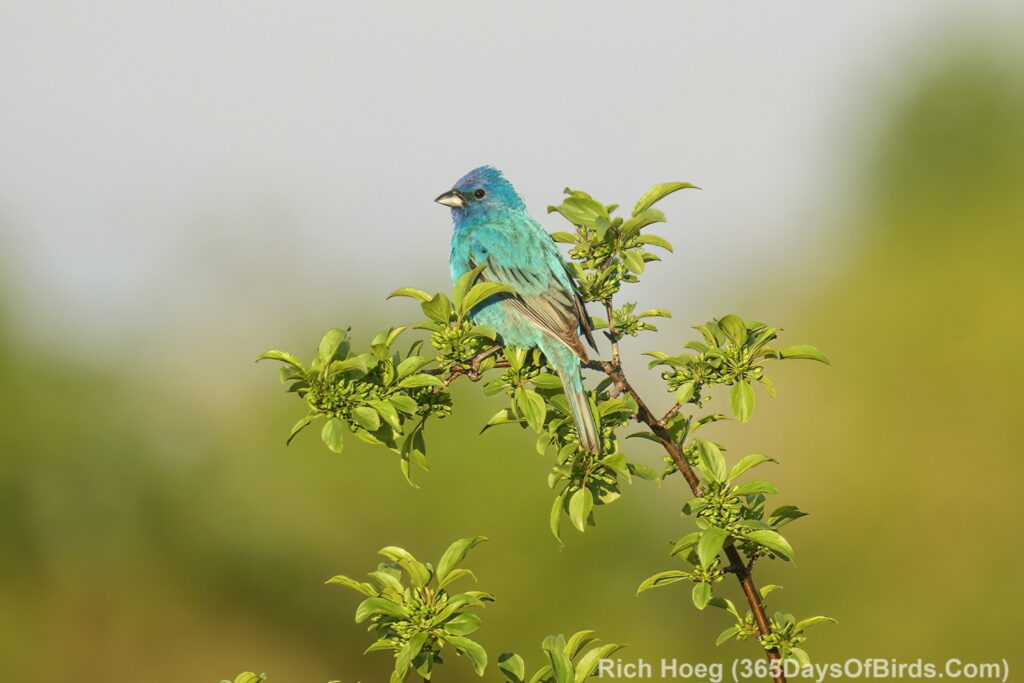
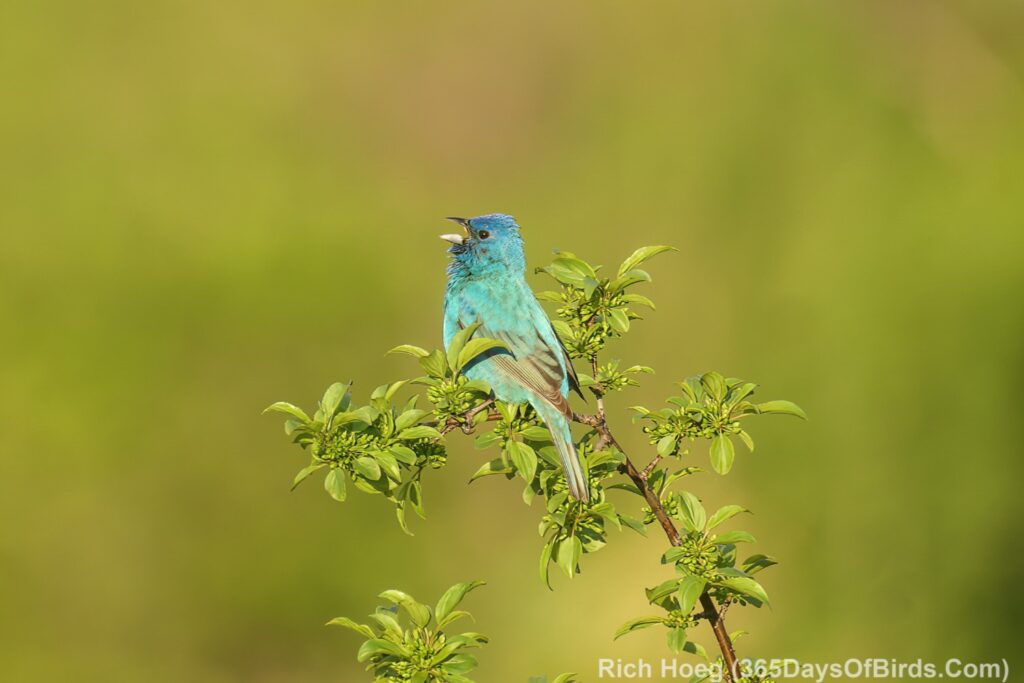
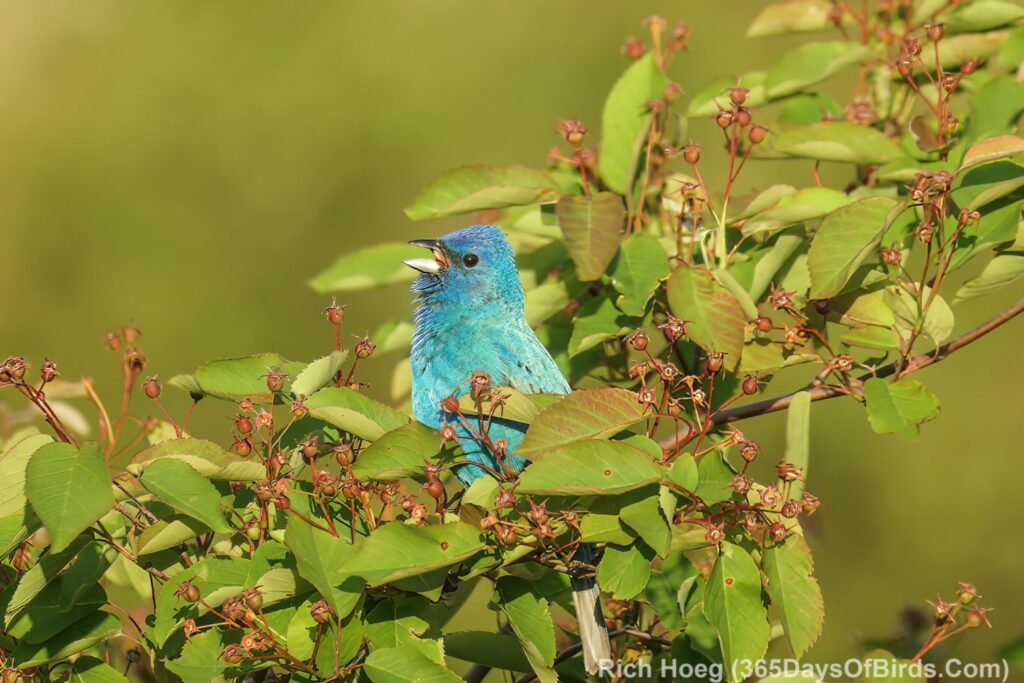
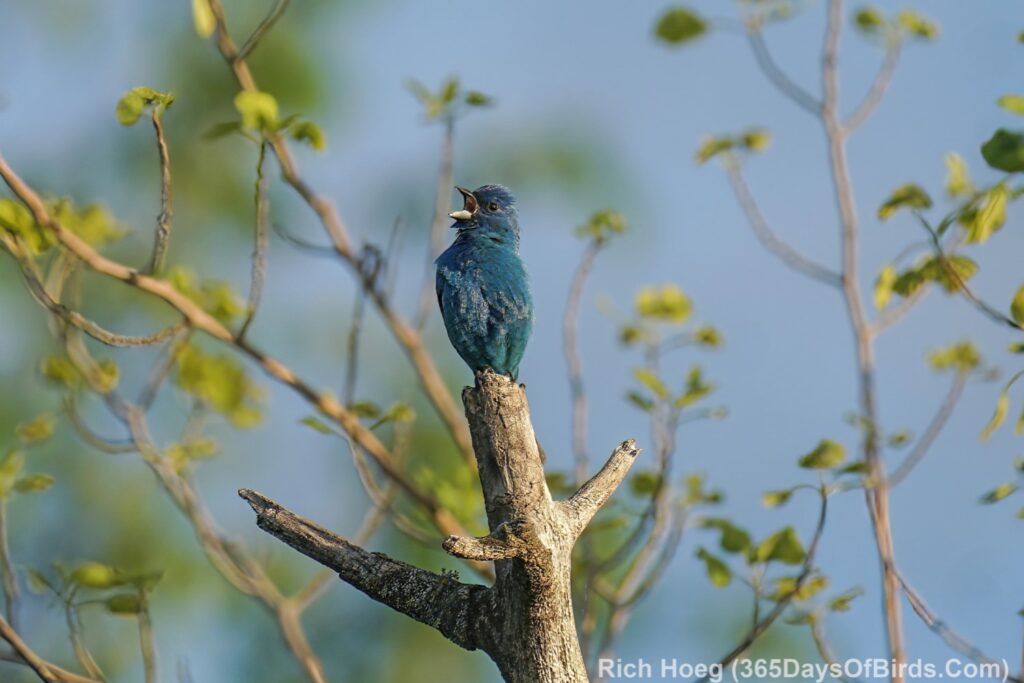
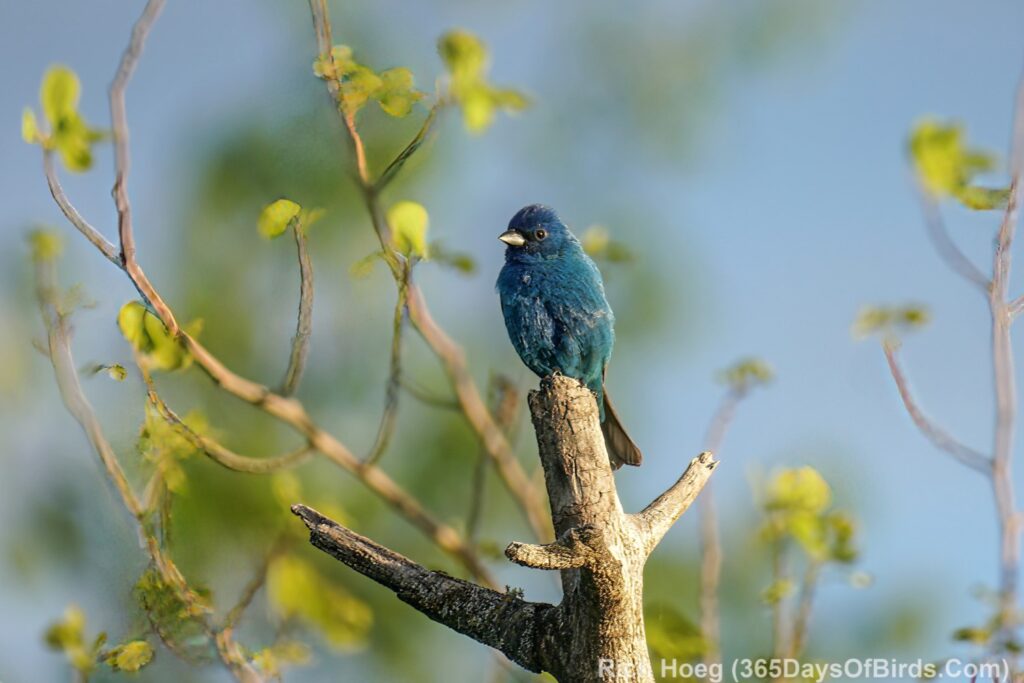
What a gorgeous bird that is and fantastic pictures Richard!
Amazing Photos!!!
Bravo 👏- just spectacular work Richard, awesome pics! Working as a caddy, especially in the hot summer months was not for the feint of heart. Hope you are well.
Great to hear from you! I will respond privately tomorrow. The hills of Duluth help build character.
So, the variety of blue coloring…? Are they all males? Why some lighter in blue coloring?
The difference in color is due to whether I could get the sun behind me or not. The deeper blue / indigo is a better representation of their color. In addition, there were some wispy clouds around. The more brilliant colors occured with the sun totally out in the open and lower to the horizon. Colors at first or last light are always more brilliant … thus called the golden hour.
.
I never try to photograph white birds much after sunrise in the summer. The whites will always be blown out. Colors change based upon the angle and amount of light. I consider from November 1st to February 1st the eternal golden hour here in the Northland as the sun never gets very high in the sky.